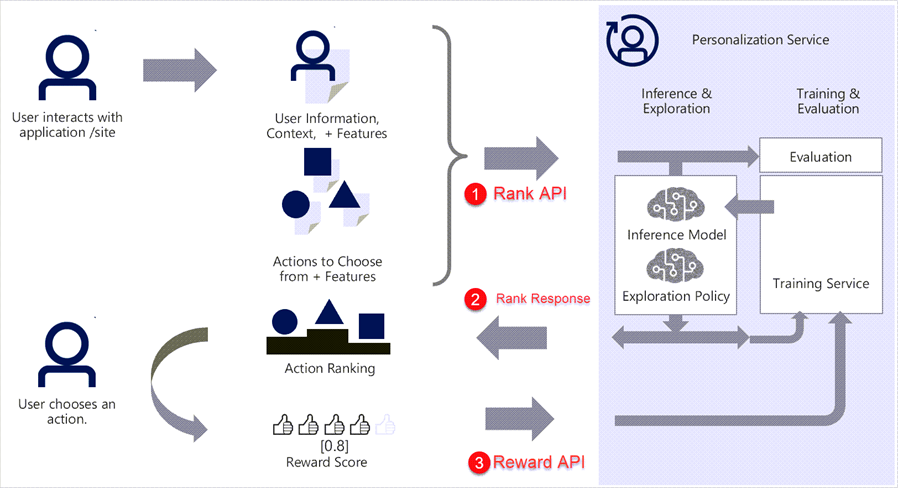Azure personalizer helps you build smart applications that recommend a better advertisement position and the most relevant products to show to customers based on contextual information. After showing the most relevant content to the users, the personalizer empowers the application to monitor user’s interaction with the intent to deliver key insights for improvement.
Why invest in Azure Personalizer?
Personalized content is the future of marketing. This is why Netflix opened the best algorithm competition with a one million prize! If you can determine the user’s experience, you can recommend more relevant content that can in return help you get closer to significant revenue.
To deliver the most relevant content to your users, you need to use machine learning models that can continuously introduce improvements. Azure Personalizer does exactly that; it helps you create a highly personalized user experience where the application continuously learns and adapts based on the users’ interactions with the content. As a result, personalizing enables you to build long-term relationships with your current customers, and reach potential customers for increased revenue.
Azure Personalizer use cases
Personalizer can be used in any application where ranking is essential to understand user experience. Some key use-cases of personalizer are:
- UI improvements
- Content filtering and highlighting
- Default suggestions
- Default menus
- Improve bot traits
- Decisions for contextual scenarios
- Notifications for content
- Bot intent clarification
Getting started with Azure Personalizer
Before we get started, let’s first understand how exactly Azure Personalizer chooses the best content to show. The following image shows the process of Azure Personalizer.
















